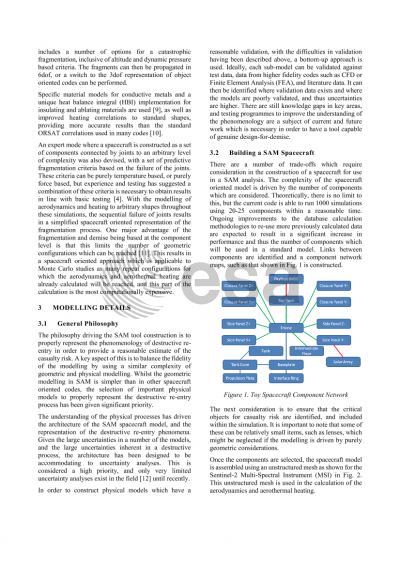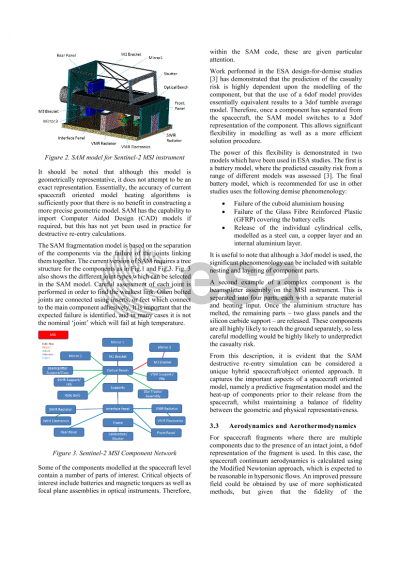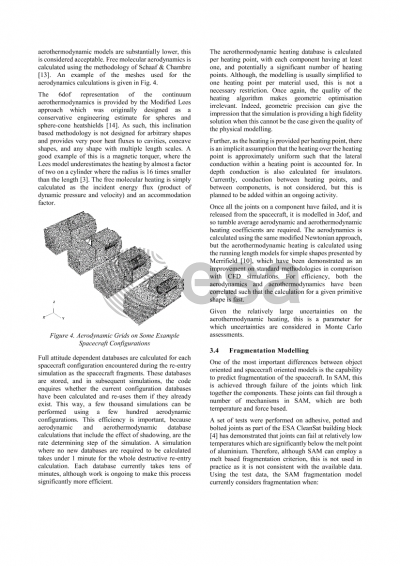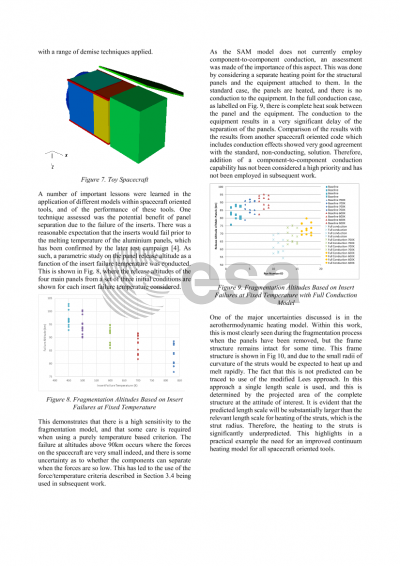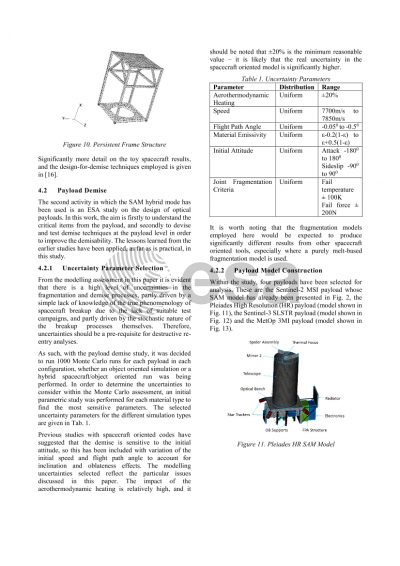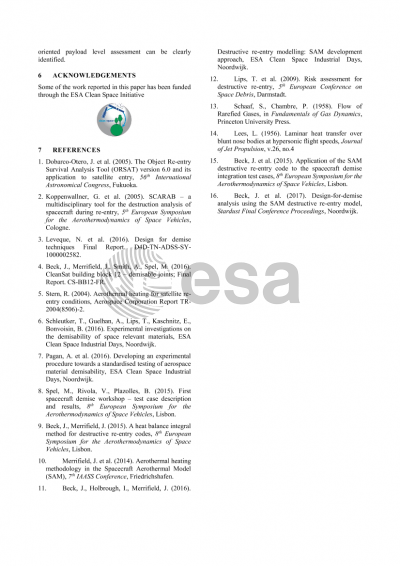Document details

Abstract
The Spacecraft Aerothermal Model (SAM) was developed as a destructive re-entry tool for the prediction of casualty risk with aspects of both object oriented and spacecraft oriented approaches. The initial version of this tool, where the user is strongly constrained, allows a full six-degree-of-freedom (6dof) representation of the vehicle with attitude dependent aerodynamics and aerothermodynamics. This version includes a number of options for a catastrophic fragmentation, inclusive of altitude and dynamic pressure based criteria. The fragments can then be propagated in 6dof, or a switch to a three-degree of freedom (3dof) representation of object oriented codes can be performed.
Specific material models for conductive metals and a unique heat balance integral (HBI) implementation for insulating and ablating materials are used, as well as improved heating correlations to standard shapes, providing more accurate results than the standard ORSAT correlations.
An expert mode where a spacecraft is constructed as a set of components connected by joints to an arbitrary level of complexity was also devised, with a set of predictive fragmentation criteria based on the failure of the joints. These criteria can be purely temperature based, or purely force based, but experience and testing has suggested a combination of these criteria is necessary to obtain results in line with basic testing. With the modelling of aerodynamics and heating to arbitrary shapes throughout these simulations, the sequential failure of joints results in a simplified spacecraft oriented representation of the fragmentation process.
Application of the tool within a number of European Space Agency (ESA) projects has highlighted the high level of uncertainties in the fragmentation process, partly driven by a simple lack of knowledge of the true phenomenology of spacecraft breakup due to the lack of suitable test campaigns, and partly driven by the stochastic nature of the breakup processes themselves. Initial test data on joints, generated during the ESA CleanSat project, has highlighted that the failure of joints is different from the current assumptions in most models. This demonstrates that the inclusion of uncertainties in any destructive re-entry assessment is of paramount importance.
In the ongoing ESA activity on the demisability of optical payloads, the SAM tool is being employed to assess design for demise techniques applicable to these payloads with a full uncertainty analysis which is the first of its kind in the field. Each configuration is assessed using a Monte Carlo approach with 1000 object oriented runs, inclusive of multi-material and parent/child objects as well as uncertainties on aerothermal heating, emissivity, fragmentation altitude and entry state vector in order to cover the necessary range of possibilities, and casualty risks are considered in a mean sense. This is supported by a further 1000 run Monte Carlo assessment in the simplified spacecraft oriented mode with uncertainties on heating, emissivity, entry state vector and the initial spacecraft attitude.
Due to the nature of the construction of the spacecraft model, and the manner in which it generates repeat geometric configurations, a true uncertainty analysis is tractable using a spacecraft oriented approach with a predictive fragmentation model.
Preview

